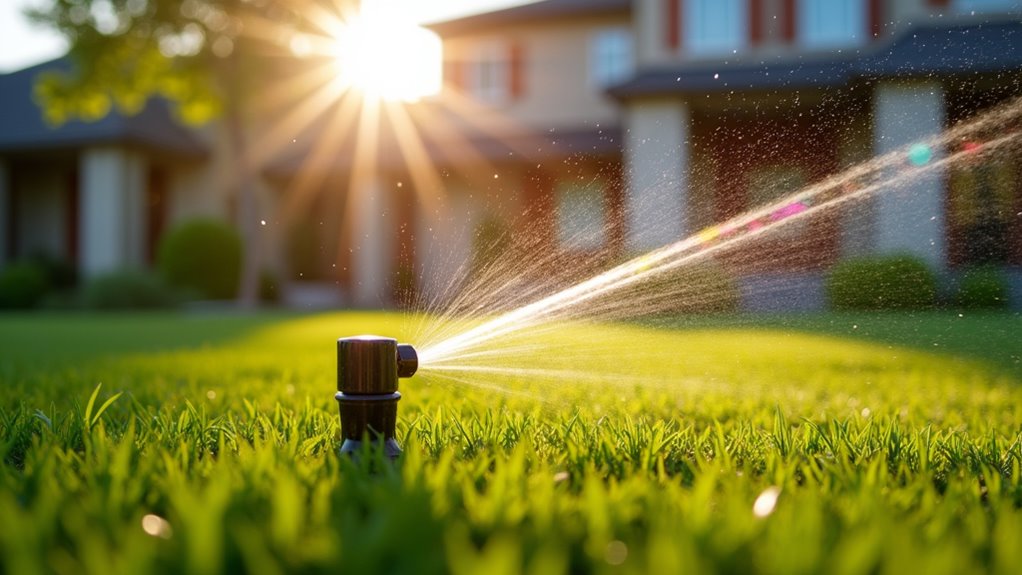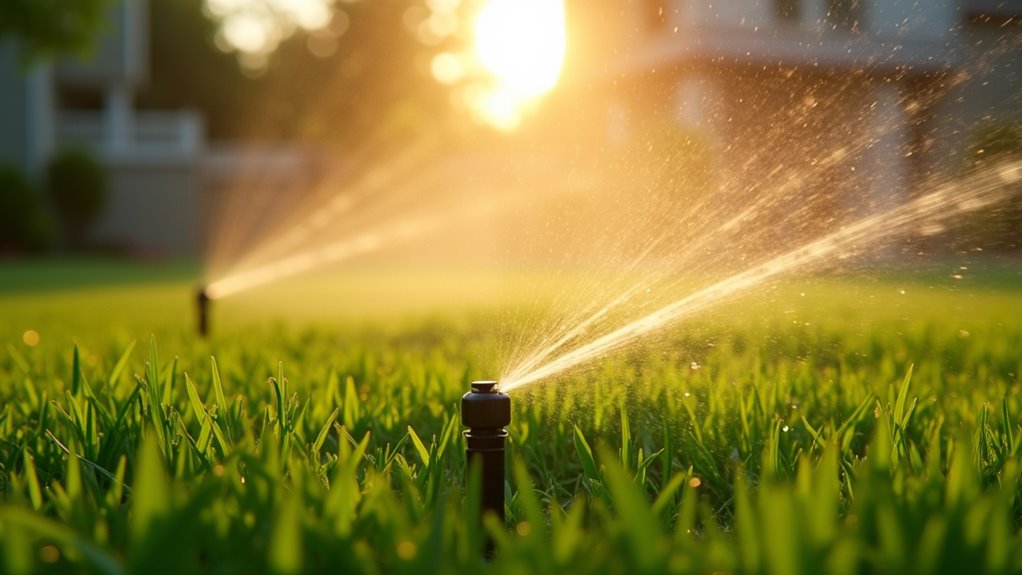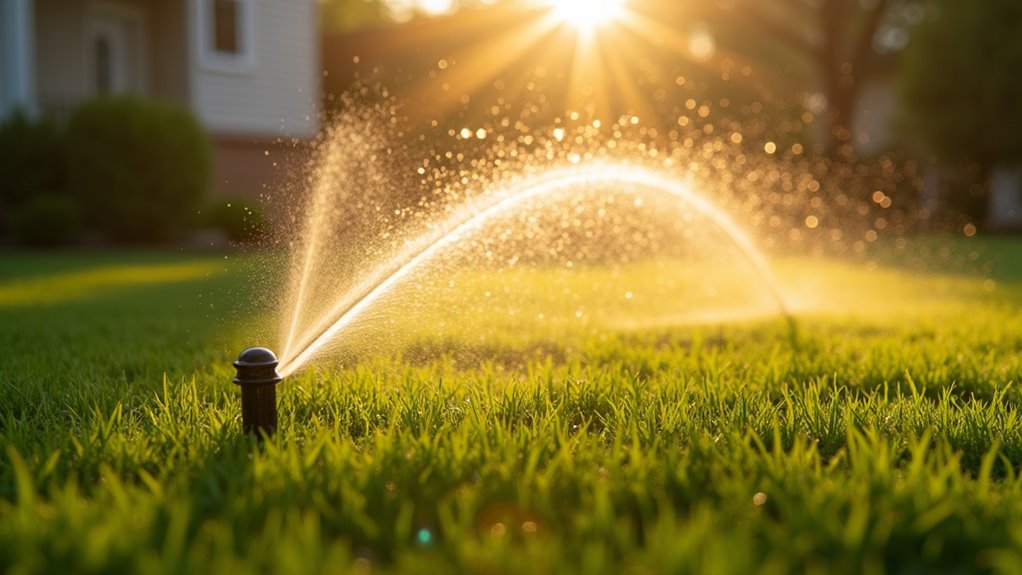Fall is the ideal time to apply lime to your lawn, allowing it to penetrate soil before winter and adjust pH for spring growth. Early spring offers a secondary window that prepares turf for summer stresses. While summer applications require extra precautions due to heat, winter treatments can work if the ground isn’t frozen. You’ll achieve the best results by testing your soil pH initially, ensuring your lawn truly needs this valuable treatment.
Fall: The Prime Season for Lime Application

When the leaves begin to change colors and temperatures start to cool, fall emerges as the ideal time to apply lime to your lawn. This prime timing allows the lime to penetrate the soil gradually before winter arrives, addressing acidity issues while your grass prepares for dormancy.
The fall benefits are substantial—lime breaks down slowly, and applying it now gives it ample time to adjust your soil’s pH before spring growth begins. Your soil health improves throughout winter as the lime works its way into the ground through freeze-thaw cycles and seasonal precipitation.
You’ll also notice less competition from weeds in fall, ensuring the lime’s effects focus on your lawn rather than unwanted plants. Apply lime after aeration for maximum effectiveness and soil contact.
Spring Liming: Setting Up for Summer Success
Although fall remains the perfect time for lime application, spring offers a secondary window to improve your soil’s pH before the intense growing season begins. Apply lime in early spring when the soil has thawed but before summer heat arrives. This timing gives the lime several weeks to start working before your grass’s peak growth period.
Spring benefits include preparing your turf for summer stresses like drought and heat. The gradual pH adjustment boosts nutrient availability, particularly for nitrogen, phosphorus, and potassium that fuel strong growth.
For ideal soil health, test before application and avoid spreading lime during wet conditions. While results won’t be as immediate as fall applications, spring liming provides a valuable opportunity to address acidic soil when you’ve missed the autumn window.
Summer Considerations When Applying Lime

Generally speaking, summer presents considerable challenges for lime application that make it the least ideal season in your lawn care calendar. The combination of high temperatures and typically dry conditions can greatly reduce lime’s effectiveness while potentially causing additional stress to your lawn.
If you must apply lime during summer months, consider these essential factors:
- Apply early morning or evening to minimize heat stress on both the grass and beneficial soil microorganisms
- Water thoroughly after application to improve moisture retention and help the lime penetrate the soil
- Use a finer grade of lime that will break down more quickly in summer conditions
Remember that your lawn is already combating heat stress during summer, so any application should be done with extra care to avoid compounding existing seasonal pressures.
Winter Lime Applications: Pros and Constraints
Winter presents a viable window for lime application that many homeowners overlook. While frozen ground prevents proper absorption, unfrozen soil during milder winter days offers unique winter benefits for addressing soil acidity. The lime has extended time to break down gradually before spring growth begins.
| Winter Lime Application | Benefits | Constraints |
|---|---|---|
| Early Winter | Less lawn traffic | Risk of runoff |
| Mid-Winter | Slow integration | Frozen soil barriers |
| Late Winter | Head start on spring | Limited rain incorporation |
| Snow-Covered Ground | Visual application guide | Poor soil contact |
| Temperature Above 40°F | Microbial activity continues | Requires unfrozen soil |
You’ll find winter applications particularly effective in regions with mild winters. Always check soil temperature before applying—if you can work the soil, lime can penetrate it. Avoid applying during or before heavy precipitation forecasts.
Testing Your Soil Before Seasonal Lime Treatment

Before applying lime to your lawn during any season, you must test your soil’s pH to determine if lime is actually necessary. Most turf grasses thrive in a soil pH between 6.0 and 7.0, so testing prevents wasteful applications and potential lawn damage from over-liming.
Always test soil pH before applying lime. Most grasses prefer 6.0-7.0, preventing waste and damage from unnecessary application.
You can test your soil using:
- Home testing kits from garden centers that provide quick, basic pH readings
- Digital pH meters that offer immediate results with reasonable accuracy
- Professional soil testing services that deliver thorough nutrient balance reports
For accurate results, collect samples from multiple lawn areas at 2-4 inches deep. Testing should occur 3-4 weeks before planned lime application to allow time for result analysis and product selection. Remember, proper nutrient balance depends on correct pH levels, making testing the critical initial step in any lime application program.



